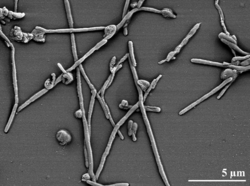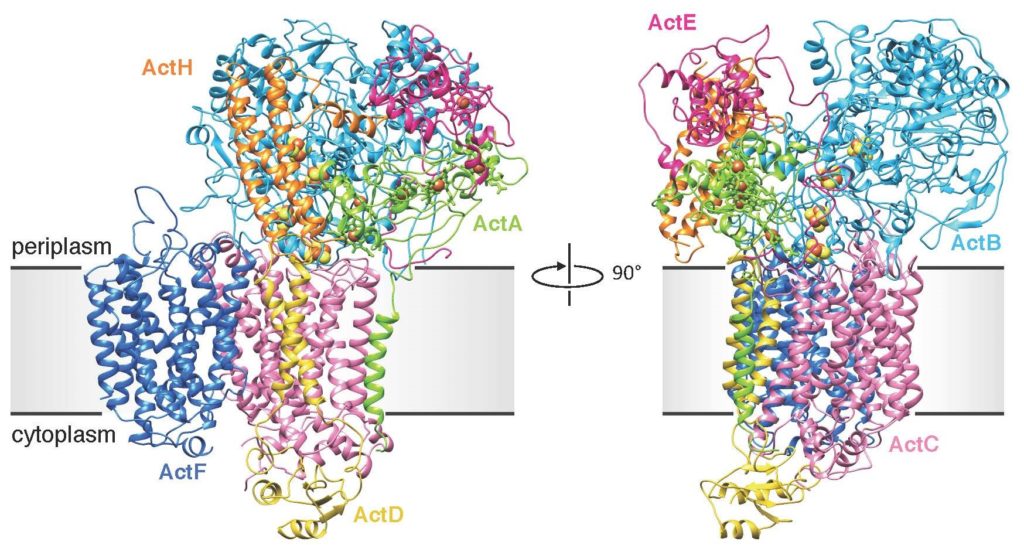
ITQB NOVA scientists, led by researcher Manuela Pereira, were able to determine the exact structure of the protein complex, a molecular machine that allows thermophilic bacteria rhodothermus marinus get energy.
They have been studying this bacterium in the laboratory for many years by various methods, but now they have achieved a great advance thanks to the electron cryomicroscopy technique that was awarded the Nobel Prize in Chemistry in 2017.
In collaboration with colleagues at the Max Planck Institute in Germany, they obtained fundamental information to understand how that “molecular machine” converts energy to the bacteria.
The results were published in the journal Nature Communications (DOI: 10.1038/s41467-018-04141-8), by the Nature group.

The bacterium studied is thermophilic and was isolated at Praia da Ribeira Quente, in the Azores. It has an optimal growth temperature of 65°C and, as it also needs oxygen, it lives in a thin layer of water where it finds the optimal conditions to grow and multiply. Heat comes to it from underground and oxygen penetrates through the atmosphere through cold water.
“Energy is at the base of life, all organisms depend on constant mechanisms of energy transformation to grow and reproduce,” recalls principal investigator Manuela Pereira.
“In eukaryotes, like us, the respiratory chains are found in the mitochondria and are made up of four protein complexes, using oxygen. Bacteria have more diversified respiratory chains and may use other compounds in addition to oxygen. This diversity allows bacteria a great versatility in occupying the territory, being able to colonize from volcanic pits with temperatures of almost 100 °C, to the interior of the human body. This work describes a new bacterial respiratory complex, thus contributing to the knowledge of the great diversity of microorganisms”.
Author Communication Office - ITQB NOVA
Science in the Regional Press – Ciência Viva

















Comments